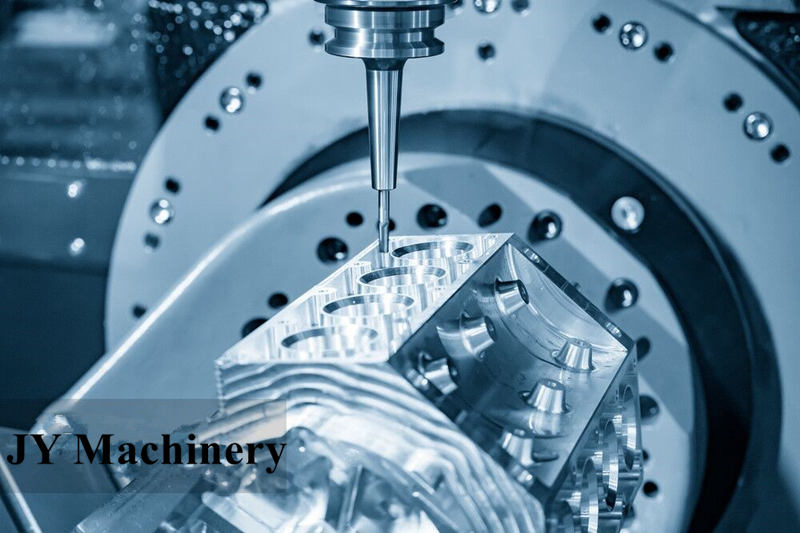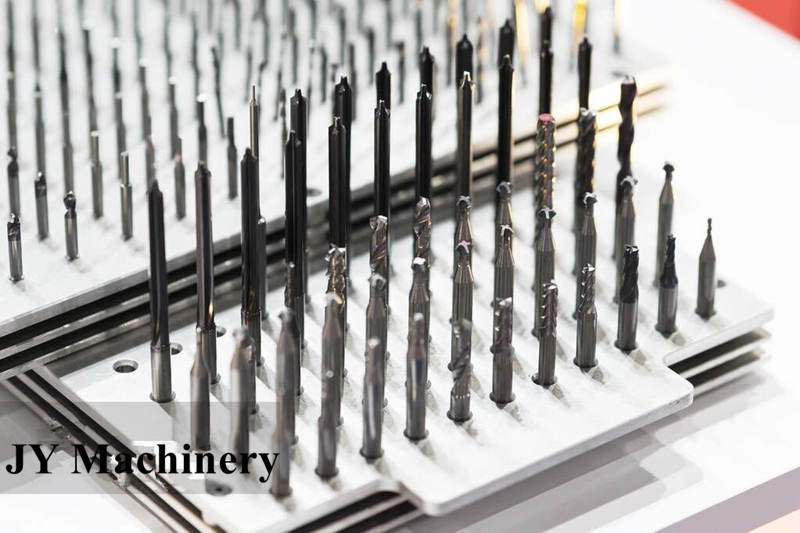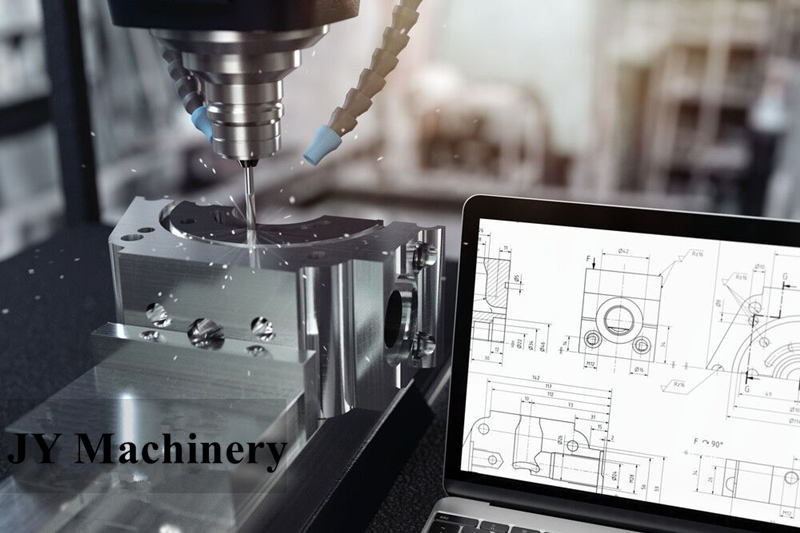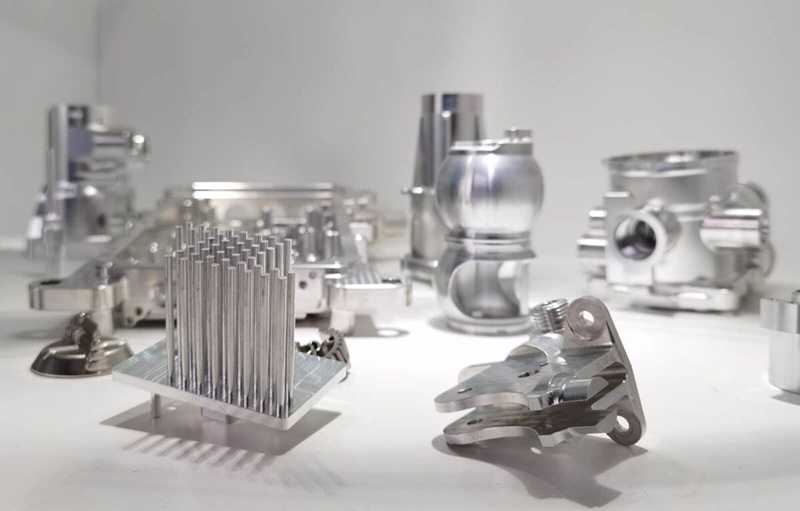JY Machinery CNC aluminum machining services provide you all-around care that our team will analyze your project carefully and process it with the most efficient process of machined aluminum to optimize your time and cost.

Aluminum is the most widely used and applied material among nonferrous metals, and its application scope is still expanding.
The advantages and characteristics of aluminum are as follows:
There are many reasons for the deformation of cnc aluminum parts, which are related to the material, the shape of the parts, and the production conditions. There are mainly the following aspects: deformation caused by internal stress of the blank, deformation caused by cutting force and cutting heat, and deformation caused by clamping force.Today JY Machinery will introduce to you how to avoid deformation in cnc machined aluminum.
The adjustments of technology to reduce the deformation of workpieces
1. Reduce the internal stress of the aluminum material
Natural or artificial aging and vibration treatment can partially eliminate the internal stress of the blank. Pre-processing is also an effective process method. For the large blank, If the excess part of the blank is pre-processed and the margin of each part is reduced, not only can the processing deformation of the subsequent process be reduced, but also a part of the internal stress can be released after pre-processing for a period of time.
2. Improve the cutting ability of the tool
The material and geometric parameters of the tool have an important influence on the force and heat of cutting. The correct selection of the tool is very important to reduce the deformation of the parts.
(1) Reasonably choose the tool geometry parameters.
(2) Improve the tool structure.

3. Improve the clamping method of the workpiece
For thin-walled aluminum workpieces with poor rigidity, the following clamping methods can be used to reduce deformation:
①For thin-walled bushing parts, if a three-jaw self-centering chuck or spring chuck is used to clamp from the radial direction, once it is released after processing, the workpiece will inevitably be deformed. At this time, the method of pressing the axial end face with better rigidity should be used. To locate the inner hole of the part, make a self-made threaded through mandrel, sleeve it into the inner hole of the part, press the end face with a cover plate on it, and back it with a nut. When machining the outer circle, the clamping deformation can be avoided, so that satisfactory machining accuracy can be obtained.
②When processing thin-walled and thin-plate workpieces, it is best to choose a vacuum suction cup to obtain a uniform clamping force, and then process it with a smaller cutting amount, which can well prevent the deformation of the workpiece.
In addition, a packing method can also be used. In order to increase the process rigidity of thin-walled workpieces, media can be filled inside the workpiece to reduce the deformation of the workpiece during clamping and cutting. For example, pour a urea melt containing 3% to 6% potassium nitrate into the workpiece, and after processing, immerse the workpiece in water or alcohol to dissolve the filler and pour it out.
4. Reasonable arrangement of procedures
During high-speed cutting, due to the large machining allowance and intermittent cutting, the milling process often produces vibration, which affects the machining accuracy and surface roughness. Therefore, the CNC high-speed cutting process can generally be divided into: rough machining-semi-finish machining-clear corner machining-finishing and other processes. For parts with high precision requirements, it is sometimes necessary to perform secondary semi-finishing and then finishing. After rough machining, the parts can be cooled naturally to eliminate internal stress caused by rough machining and reduce deformation. The margin left after rough machining should be greater than the amount of deformation, generally 1 to 2 mm. During finishing, the finishing surface of the part must maintain a uniform machining allowance, generally 0.2-0.5mm is appropriate, so that the tool is in a stable state during the machining process, which can greatly reduce cutting deformation, obtain good surface machining quality, and ensure The accuracy of the product.
Operation skills to reduce processing distortion
The adjustments of operation method to reduce the deformation of workpieces

In addition to the above-mentioned reasons, aluminum parts deform during processing. In actual operation, the operation method is also very important.
1. For parts with large machining allowances, in order to have better heat dissipation conditions during processing and avoid heat concentration, symmetrical processing should be used during processing. If there is a 90mm thick sheet that needs to be processed to 60mm, if one side is milled and the other side is milled immediately, and the final size is processed at a time, the flatness will reach 5mm; if repeated feed symmetric processing is used, each side is processed twice The final size can guarantee a flatness of 0.3mm.
2. If there are multiple cavities on the sheet metal parts, it is not advisable to use a cavity-by-cavity sequential processing method during processing, as this will easily cause uneven stress and deformation of the parts. Multi-layer processing is adopted, and each layer is processed to all cavities at the same time as much as possible, and then the next layer is processed to make the parts evenly stressed and reduce deformation.
3. Reduce cutting force and cutting heat by changing the cutting amount. Among the three elements of cutting amount, the amount of back-cutting has a great influence on cutting force. If the machining allowance is too large, the cutting force of one pass is too large, which will not only deform the parts, but also affect the rigidity of the machine tool spindle and reduce the durability of the tool. If you reduce the amount of knives backed up, the production efficiency will be greatly reduced. However, high-speed milling in CNC machining can overcome this problem. While reducing the amount of back-grabbing, as long as the feed is correspondingly increased and the speed of the machine tool is increased, the cutting force can be reduced while ensuring the processing efficiency.
4. The order of the knife should also be paid attention to. Rough machining emphasizes the improvement of machining efficiency and the pursuit of removal rate per unit time. Generally, upside milling can be used. That is to remove the excess material on the surface of the blank with the fastest speed and the shortest time to basically form the geometric contour required for finishing. The emphasis on finishing is high precision and high quality, and down milling should be used. Because the cutting thickness of the cutter teeth gradually decreases from the maximum to zero during down milling, the degree of work hardening is greatly reduced, and at the same time the degree of deformation of the parts is reduced.
5. The deformation of thin-walled workpieces due to clamping during processing is difficult to avoid even for finishing. In order to minimize the deformation of the workpiece, the pressing piece can be loosened before the final size of the finishing process is reached, so that the workpiece can be restored to its original shape freely, and then slightly compressed, subject to the rigid clamping of the workpiece (completely By hand), so you can get the ideal processing effect. In short, the point of action of the clamping force is best on the supporting surface, and the clamping force should act in the direction of good rigidity of the workpiece. Under the premise of ensuring that the workpiece does not loosen, the smaller the clamping force, the better.
6. When machining parts with cavities, try not to let the milling cutter plunge directly into the part like a drill bit, resulting in insufficient chip holding space of the milling cutter, unsmooth chip removal, and overheating, expansion and collapse of the part. Unfavorable phenomena such as knife and broken knife. First, drill the hole with a drill of the same size as the milling cutter or one size larger, and then mill with the milling cutter. Alternatively, the CAM software can be used to produce the spiral cutting program.

Get your custom CNC Aluminum Machining Project started today
When you send out 3D CAD documents to us, JY Machinery will provide you with instant price, on-demand delivery time, as well as design for manufacturability comments for your customized CNC machining components on materials and also producing process, to make sure that the component can meet your expectations as well as budget plan demands.
Get in touch with us today for a free quote!
Skype: Chat on Skype
Email: info@jycncmachining.com
Phone: +86 15905915652